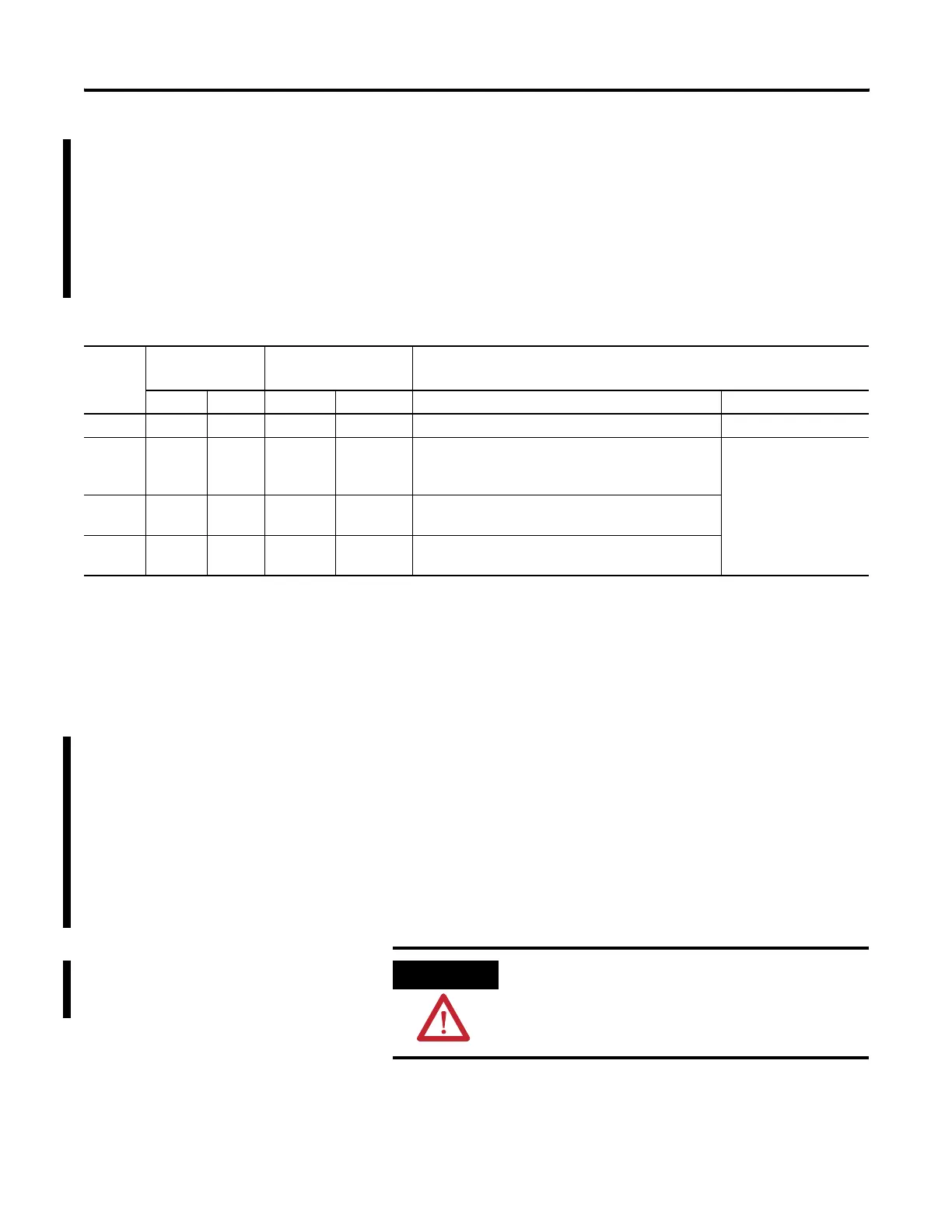96 Publication 2100-IN012C-EN-P - April 2009
Chapter 9 Maintenance
1. Use test equipment to determine the temperature differential
and the temperature rise of accessible components within the
unit.
2. Determine the services and repair recommendations based on
the temperature category in the following guidance chart.
Inspect the Units for Signs of Overheating
1. If there are no signs of overheating and thermal infrared tests
indicate service is not necessary, document the units as
acceptable.
Use this information for reviewing the mean time to
maintenance for preventative maintenance for the specific
facility.
Temperature Guidance
Category Temperature
Differential
(1)
Temperature
Rise
(2)
Repair/Service
°C °F °C °F Service Interval Recommended Action
1 < 10° < 18° < 70° < 126° No service or repair required. See step 1 below.
2 10°...25° 18°...45° 70°...100° 126°...180° Service or repair the unit at next maintenance
schedule (not greater than six months but continue
monitoring as a part of preventive maintenance.)
See step 2 below.
3 25°...50° 45°...90° 100°...115° 180°...207° Service or repair the unit within the next two weeks
and monitor the unit at the next maintenance interval.
4 > 50° > 90° > 115° > 207° Shutdown the unit and repair. Verify that the
temperature is reduced after re-energization.
(1)
Temperature (measured or rise) differential between adjacent phases or like elements. Load between phases must be balanced with a normal variation not exceeding
seven percent.
(2)
Measured temperature less ambient.
Due to difficulty obtaining accurate infrared temperature measurements from highly reflective surfaces, we recommend using temperature differential readings in
determining the Service/Repair guidelines, for example, emissivity of tin or silver plated material.
ATTENTION
To service the units, make sure that the MCC remote
power sources are disconnected and that the respective
disconnects are locked in the OFF/O position.

